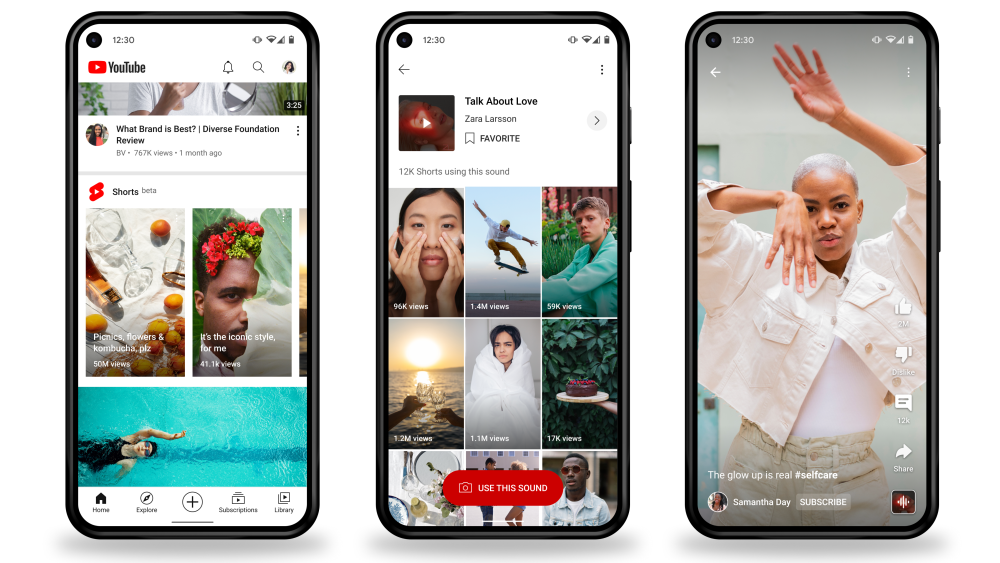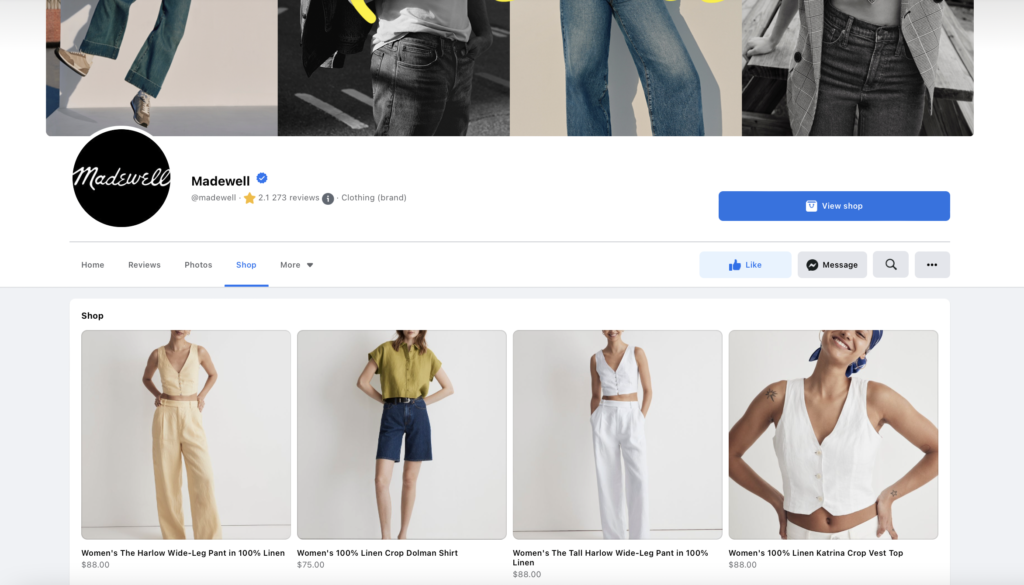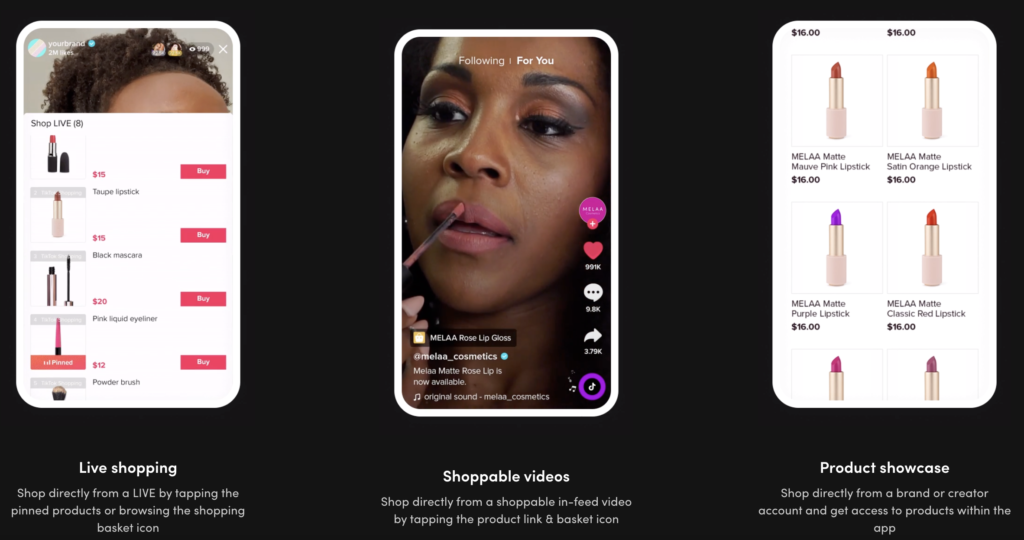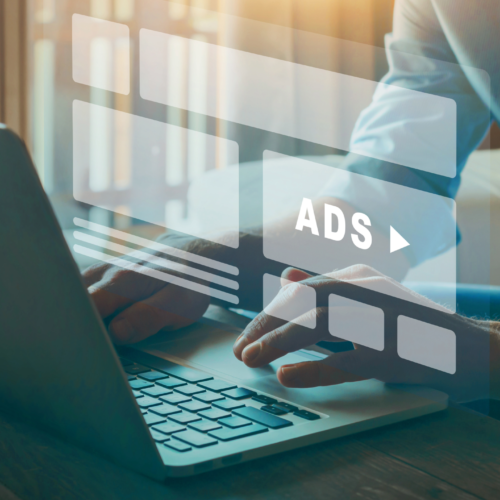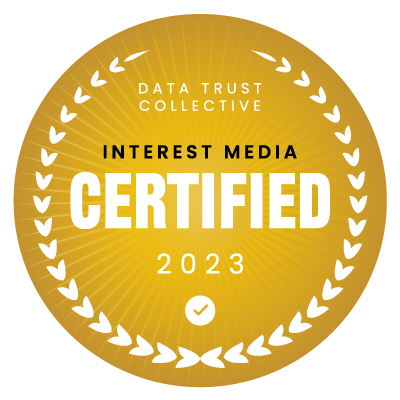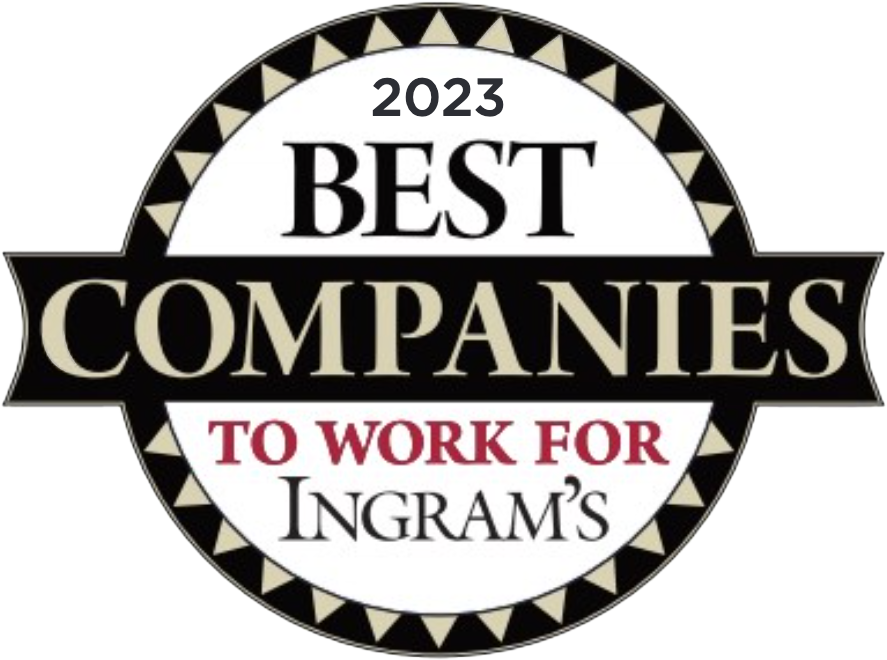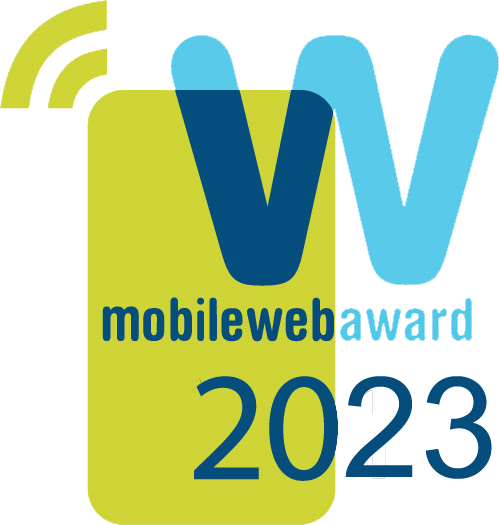
As Brands Desperately Try Multi-Format Marketing, Here’s a Better Way
- As consumer trends change, brands are desperately scaling down traditional TV campaigns and turning to different formats, such as short-form video, social media, connected TV, and video game placement.
- The downside of a multi-format marketing approach is that it requires expertise in various platforms and can strain budget and resources.
- An alternative strategy to the multi-format marketing approach is intent-based advertising which can maximize efforts and budget by directly targeting users actively attempting to engage with a good or service.
Brands Turn to Multi-Format Marketing to Connect as Consumer Trends Change
Consumer trends are moving away from traditional advertising, such as television, as consumers primarily find their information from other sources, those locations where they spend more of their time, such as social media, apps, connected TV, and even video games.
Today’s consumers want to actively engage and interact with brands, something that is difficult to do with traditional television, other than engaging with on-screen QR codes.
In recent years, consumers, younger ones especially, are demanding more than simple engagement. This audience is leveraging its growing buying power to reward brands that not only speak out but take action on social issues while ignoring or moving away from those brands that don’t.
Further, consumer expectations continue to expand, with personalization being at the forefront of the type of communication they expect and will tolerate from advertisers, backed by strong customer care.
The level of personalization and interaction is simply not possible with traditional television, radio, and print advertising, and marketers must move their advertising efforts to the new formats where today’s consumers live.
Let’s take a look at some of the different platforms and approaches brands are taking to reach and meet the demands of today’s consumers:
Social Media is at the Forefront of Where Consumers Seek Brand Information
“Most Consumers (68%) [are] primarily following brands on social media to stay up-to-date on products and services,” – Sprout Social, 2023 Sprout Social Index
Research has shown that social media has evolved from being merely a virtual gathering place for friends, family, and followers, and has also become a nexus of trusted sources when it comes to information about products and services.
Recognizing the transformation that has occurred, brands are taking advantage of the power of social media platforms and engaging with consumers.
Marketers must master the challenge of understanding the “norms” and expectations that are unique to each social media platform, then create content and interact with the audience accordingly.
The social media landscape is always shifting, and marketers must pay attention to growing networks. For example, recent rising platforms include Mastodon, Tumblr, Hive, and Discord.
The Multi-Platform Challenges of Short-Form Video Marketing
TikTok has shaken up social media, especially as younger users have gravitated toward the platform. This trend prompted YouTube to develop YouTube Shorts in response. Other platforms have also been forced to follow suit to keep up as Meta, Snapchat, Instagram, and others have delivered similar offerings such as Reels and Spotlight. Moreover, some companies have shifted away from putting the bulk of their efforts into static social media content and advertising to focus more on short-form videos and the platforms that feature them.
This trend has sparked demand for experts in short-form video at advertising agencies, particularly those who can demonstrate expertise in creating short-form videos across the various platforms, understanding the nuances of each.
On TikTok, for example, what does well are creative videos that are fully immersive and engaging, ranging typically between 10-30 seconds long. These videos heavily rely on trending styles, as well as themes and sounds.
However, on YouTube Shorts, the audience gravitates toward informational or tutorial-style videos, many of which lead to long-form content by the same creator.
On Instagram, Reels are less than 30 seconds, and the short-form videos that do well there adhere to a style that features a more polished aesthetic.
If there is a silver lining, some creators have found that creating a short-term video that works well on TikTok, can often translate well to YouTube Shorts and Instagram Reels. It’s simply a matter of creating good content that can speak for itself anywhere. TikTok’s tagline is “Make TikToks, not ads.” The point is, that the content needs to be organic and less produced. It needs to be engaging and creative so that it stops people in their tracks.
There is a fine line between influencer marketing and being a great creator and that can be a difficult combination to master.
Connected TV
Unlike traditional television, connected television is digital and interactive. Connected TV has become a key channel for marketers as consumers have moved away from linear television.
Connected TV (CTV) occurs through streaming television to digitally distribute video content across devices with an Internet connection. Advertisers place their ads within this streaming content. Because it is similar to Internet content, advertisements are interactive, providing actions that viewers can take.
For example, Amazon Ads offers CTV ads on its platforms such as Amazon Freevee, Twitch, and network and broadcaster apps across Fire TV.
Social Commerce
According to Sprout Social, “social commerce” is about to see a boom, based on signs that emerged at the end of 2022, where a record-breaking Black Friday/Cyber Monday saw a big upswing in the sale of luxury goods. Further, there was also a huge posting of so-called “haul videos” (or hauls) on TikTok and Instagram. Hauls are typically videos that show recently purchased items, such as clothing, makeup, jewelry, or household goods, and where the person discusses details about the items in their purchasing experience.
TikTok Launches TikTok Shop
But perhaps the biggest indicator of all that social commerce will take off is TikTok’s launch of its e-commerce product, TikTok Shop, in the US in early September 2023. The advantage of the shop will be that creators can make it much easier for users to purchase products from in-feed videos and live videos.
For brands, they will be able to create their own product portfolios that will be accessible from their profile pages.
Further, TikTok Shop has a dedicated tab that allows users to search for different products, discover products through recommendations, browse items in different categories, and manage their orders, according to TechCrunch.
“TikTok Shop empowers brands and creators to connect with highly engaged customers based on their interests, and it combines the power of community, creativity, and commerce to deliver a seamless shopping experience,” TikTok said in a blog post.
Video Game Marketing
Video Game advertising today is not what it was in the past. Before, interactive commercials were the norm. Mobile games were created based on characters such as Ronald McDonald or the cast of M&Ms, according to Gamerant. One downside of this approach of course was the 3-4+ year wait for games to be developed. Many advertisers moved toward product placement within a video game. Some examples include the placement of Kit Kats in Theme Hospital; Subway in Drake’s Deception; KFC and Pizza Hut in Phantasy Star Portable 2; and Diesel Clothes in Devil May Cry 2.
“Out-of-the-box” by Designing a Game Box/Refrigerator
As an example of just how far marketers will go to reach audiences on multiple platforms, beer brand Heineken took a completely out-of-the-box approach in its latest campaign.
Heineken’s Brazil group and Publicis Groupe’s LePub Brazil designed a functioning gaming PC that doubles as a fridge to keep beverages cold as part of its “Not All Nights Out are Out” campaign targeting gamers, as reported by Marketing Dive. The gaming PC/refrigerator is dubbed “TH3 G4M1NG FR1DG3.” Heineken also utilized a partnership with Gaules, Brazil’s top Twitch streamer, who will host a giveaway for his 4 million followers.
Advertising for Avatars in the Metaverse
As things move into the Metaverse and virtual reality, advertisers are also moving into that format.
A creative approach was taken by apparel brand Diesel, who partnered with digital fashion retailer DressX to launch a collection with Diesel for Meta Avatars, Retail Dive reported. The digital clothing for avatars was made to mirror the in-store offering of 10 looks by Diesel. They were made available through the Meta Avatars Store on Instagram, Facebook, Messenger, and Quest VR.
The Downside of the Multi-Format Marketing Approach
In the current marketing climate, marketers are faced with the task of, not only having to pursue consumers on multiple formats but also the challenge of having expertise on the various platforms, understanding the nuances and the do’s and don’ts of each that can either elevate or sink your brand.
The obvious downside of the multi-format marketing approach is that it takes significantly more resources and budget to be able to establish a strong presence in a variety of areas. The average company is not likely to have marketing staff that is an expert on every platform. This means you’ll have to budget to hire outside experts, influencers, and/or firms to help you with your marketing for a specific platform.
For example, short-form videos, such as those that are successful on TikTok and YouTube shorts, have a certain style. You need creators on your team who know how to achieve what the audience is looking for.
Still, your best efforts on these platforms may not necessarily connect. You may need to collaborate with “influencers” who have built up trust with their recommendations and have a large audience. The influencer will serve as a “trusted source” to garner interest in your product or service. You may need to work with different influencers on different platforms.
Next, we’ll show you an alternative to this multi-format approach that will allow you to cut through the clutter and directly target prospects who are already actively seeking a specific solution or product: Intent-based marketing.
Alternative to Multi-Format Marketing: Directly Connect with Qualified Prospects
The prospect of having to market on multiple platforms and formats is concerning for businesses for numerous reasons. While it may be free to post your content, creating effective content comes at the cost of paying expert creators to do so.
In addition, with some content, you can’t necessarily cater to the different experience levels and needs of your audience. This means, creating multiple pieces of content that will speak to different users. Further, the “style” of your content may need to change based on the platform where it is being delivered.
Wouldn’t it be advantageous to find another approach where you didn’t have to spread your marketing over such a “wide net” to reach consumers? The alternative approach is to directly target “qualified” prospects.
The Solution: Intent-Based Marketing
Intent-based marketing is an approach that focuses on “user intent.” Specifically, “Targeting people whose online behavior shows clear purchase intentions.”
Intent-based marketing uses data to identify and target users who have already actively attempted to engage with a particular good or service. In other words, selectively advertising only to audiences that have shown clear intent toward making a purchase.
Further, ads can be personalized to deliver the right message at the right time to the right prospect.
The advantage of intent-based marketing is that it avoids the “wide net” approach in favor of a “laser-focused” targeting based on first-party data. This narrow focus eliminates consumers from the sales funnel who are not ready to buy. Not only does intent-based marketing target superior quality leads, but it also allocates your marketing budget toward those with buyer intent, reducing the number of opportunities needed to convert users.
For example, according to Markletic, if 1,000 opportunities were needed to drive $100k in revenue, intent-based advertising could generate the same amount of revenue in half the number of clicks.
Key Takeaways: Multi-format approach vs. Intent-based marketing
◊ As consumer trends change, marketers are using a multi-format approach to reach audiences on multiple platforms such as social media, connected TV, the Metaverse, video games, and more, while experimenting with different forms of content such as short-form videos.
◊ Consumers are shifting away from traditional advertising venues and gravitating toward content creators and/or influencers to gain information about products and services, as well as trusted advice.
◊ Brands are faced with the challenge of mastering content creation on a variety of platforms and formats, and delivering all of these at once to reach today’s audiences.
◊ The disadvantage of multi-format marketing is that it requires more effort, and more time, and can require the help of additional experts, such as creators and influencers, while putting a strain on or exceeding advertising budgets.
◊ An alternative to a multi-format marketing approach is to use direct marketing, such as intent-based marketing that targets specific consumers later in the sales funnel who have demonstrated they are actively seeking a solution and are ready to buy.
◊ Intent-based marketing can target more qualified, superior-quality leads and maximize advertising budgets, delivering the same results in fewer clicks than other methods, such as PPC.
Interested in Learning More?
Check out our Free White Paper on The Unbeatable Nature of Intent-Based Advertising or reach out to one of our brand promotion specialists! We pride ourselves on being able to bring advertising partners the exact consumers they’ve been looking for.


